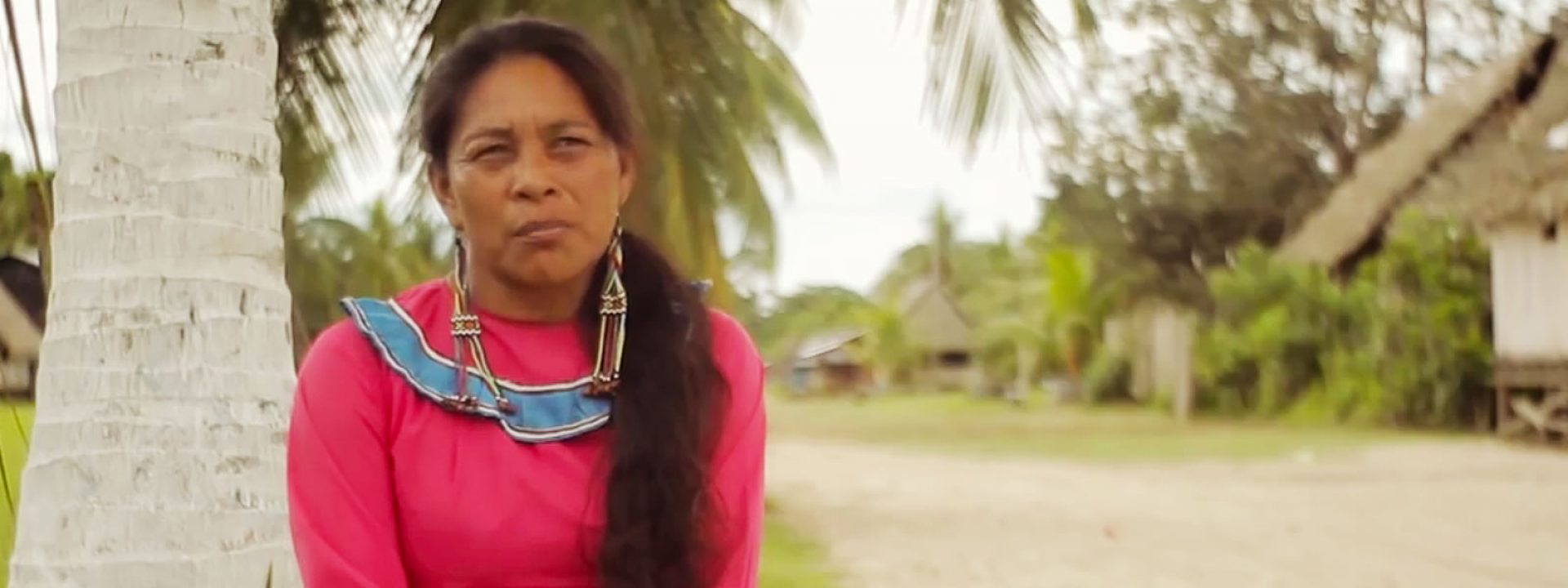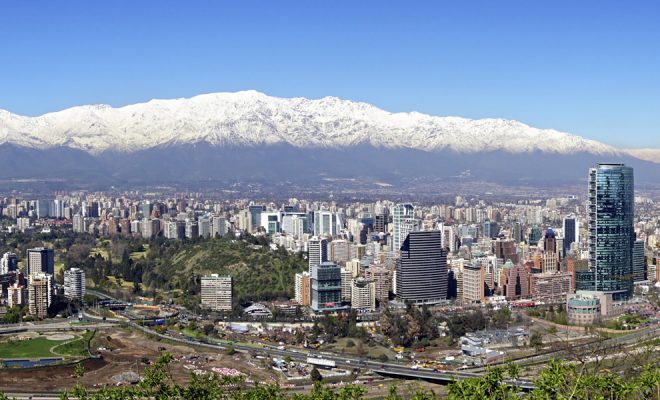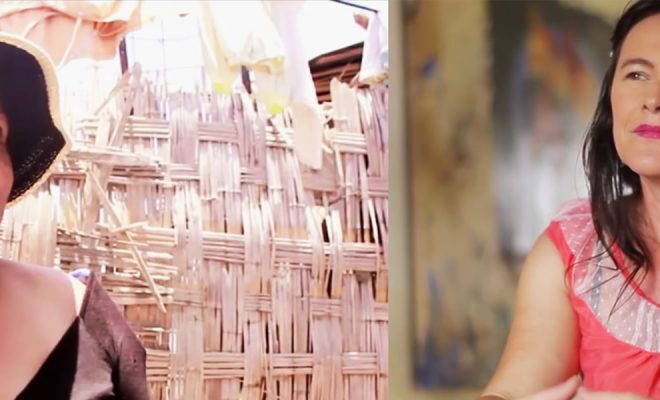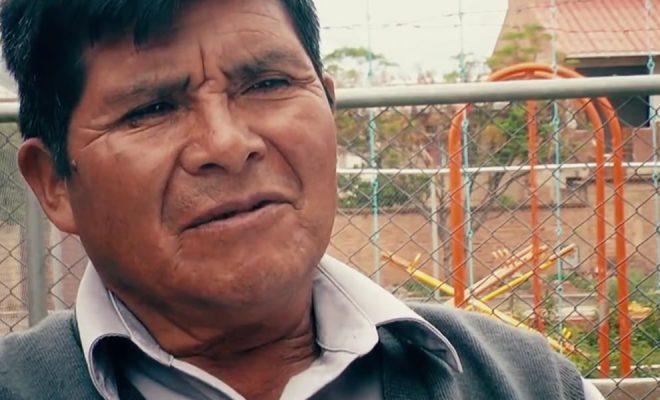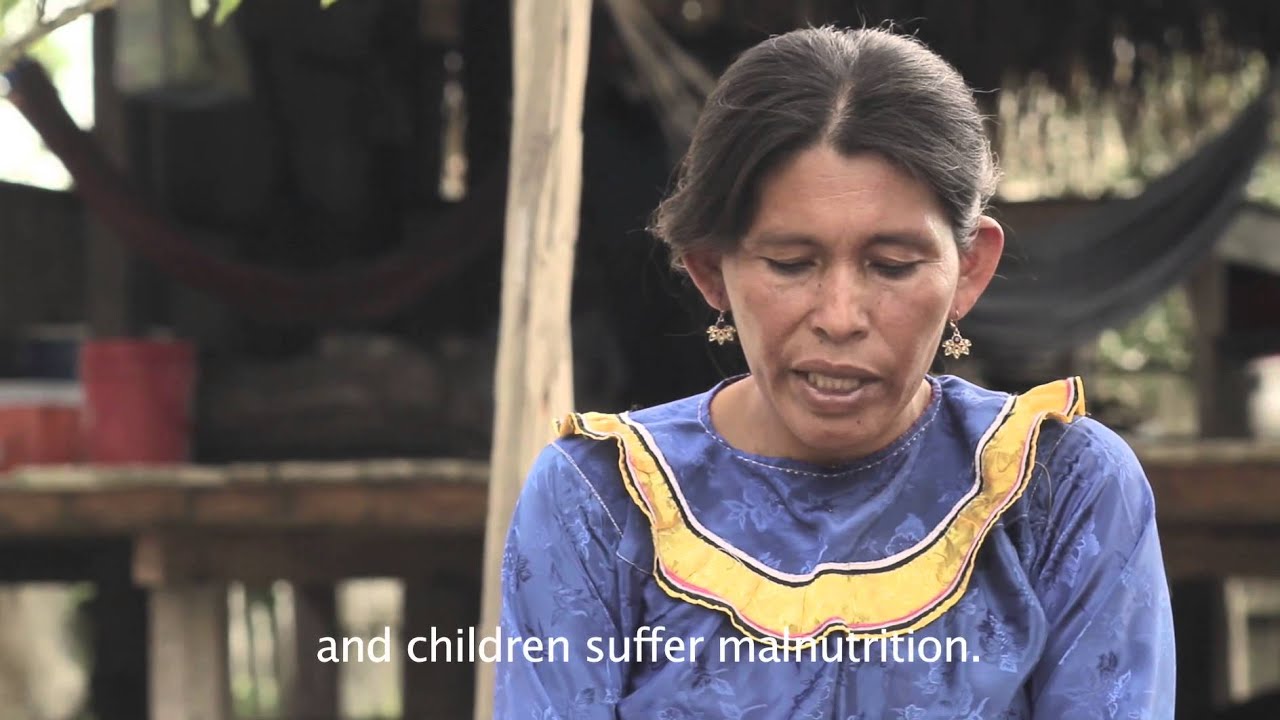
Time of changes by Minkaprod (Ecuador), finalist of the We Art Water Film Festival 3. Micro-documentary category.
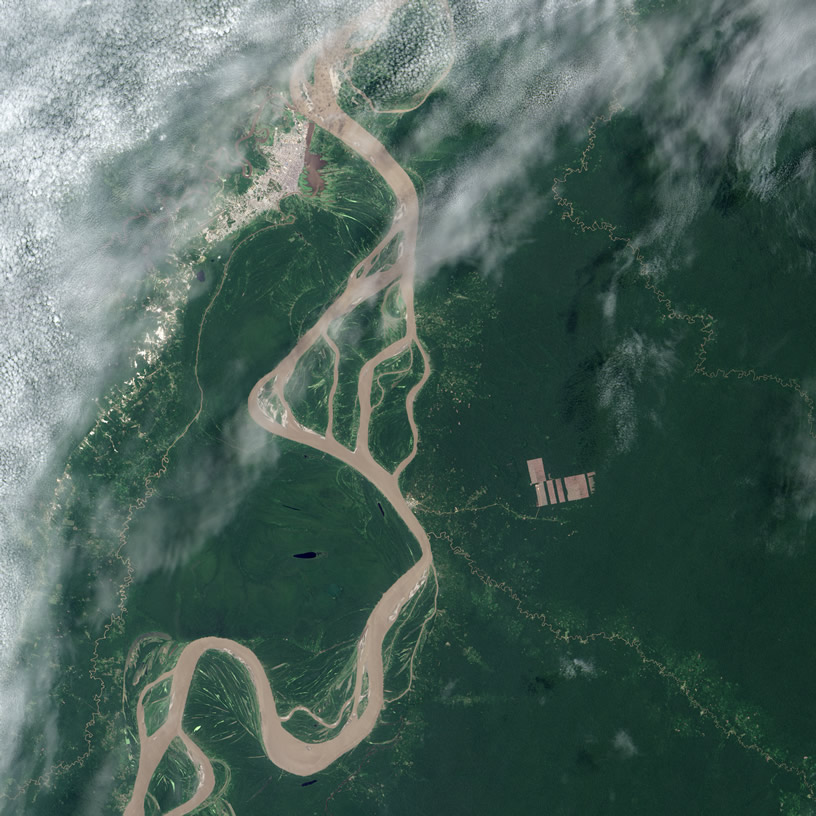
Deforestation threatens the Amazonian forest
©NASA Earth Observatory. Image by Jesse Allen and Robert Simmon.
Amazonia, one of the great lungs of the Earth, is one of the most closely watched areas in the planet by scientists who study climate change. Various alerts have been activated in the last few decades on the deforestation it suffers and its vulnerability to global warming. According to a study by the World Meteorological Organization (WMO), the Amazon rainforest experienced record-breaking temperatures and droughts during the 2015-16 El Niño phenomenon, and the forest area affected by the rainfall decrease was 20% higher than in other extreme episodes of the phenomenon.
Scientists alert and raise doubts about the capacity of the largest tropical forest in the world to withstand the impact of these changes in rainfall, as revealed by a study published in the magazine Global Change Biology. The tree mortality increases and their growth decreases during droughts, reducing the capacity of the Amazon rainforest to store atmospheric CO2; and these effects might, in the long run, lead to Amazonia becoming a carbon drain instead of a carbon source, which would dramatically speed up the global warming of the atmosphere.
The climate of the Andean area has been specifically affected by climate change and by the effects of the intense El Niño episodes, as it has very variable ecosystems and it suffers a growing deforestation. The mountainous area has experienced serious floods in the last 25 years, caused by the phenomenon, combined with intense and long droughts, like the one in 2016.
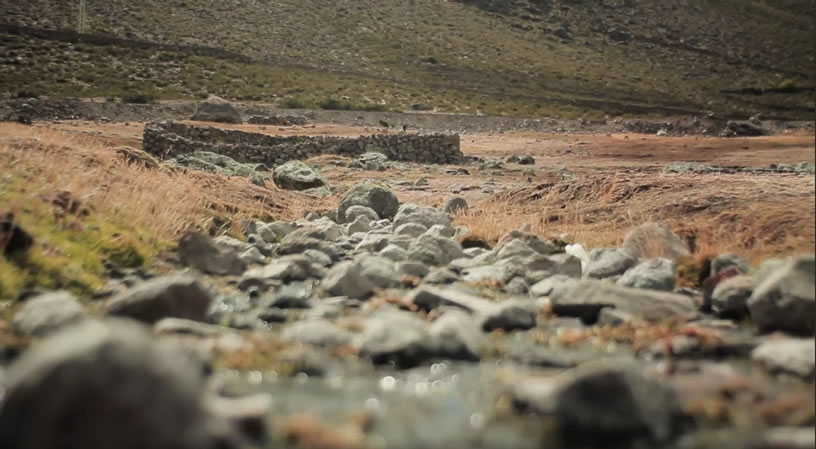
Andean landscape. Quechua area.
Less crops, less fishing, more solidarity
The population of Andean and Amazonian Peru is directly affected by these changes. The droughts and flooding directly affect the Quechua indigenous communities, in the Andes and Shipibo, in the Peruvian Amazonia, as shown in the short film. They have a very deep ancestral culture in regard to water: “We adore water, we cannot live without it, because it gives life, both to humans and animals… Why do these things happen? Because Mother Earth is alive, and exactly like we do, it wants to eat and drink.”
“They steal our trees…they take away our wood.“ More than one million hectares of forest have been lost in the area between 2001 and 2015. Small and medium-scale agriculture and illegal logging are the causes of 80% of this deforestation. According to the experts of the Monitoring of the Andean Amazon Project (MAAP), it will be very difficult to control this deterioration, as the problem is dispersed in a large geographical area.
Confronted with this situation, the natives have very few resources, but their strong local roots make them especially supportive. It is their only strength, but it is powerful and exemplary: “Water gives us life. Now we value it more. This is the reason why we all participate in the task of obtaining water, everyone, including elderly people… We are concerned about our native brothers from other communities. Because climate change affects us all.”


